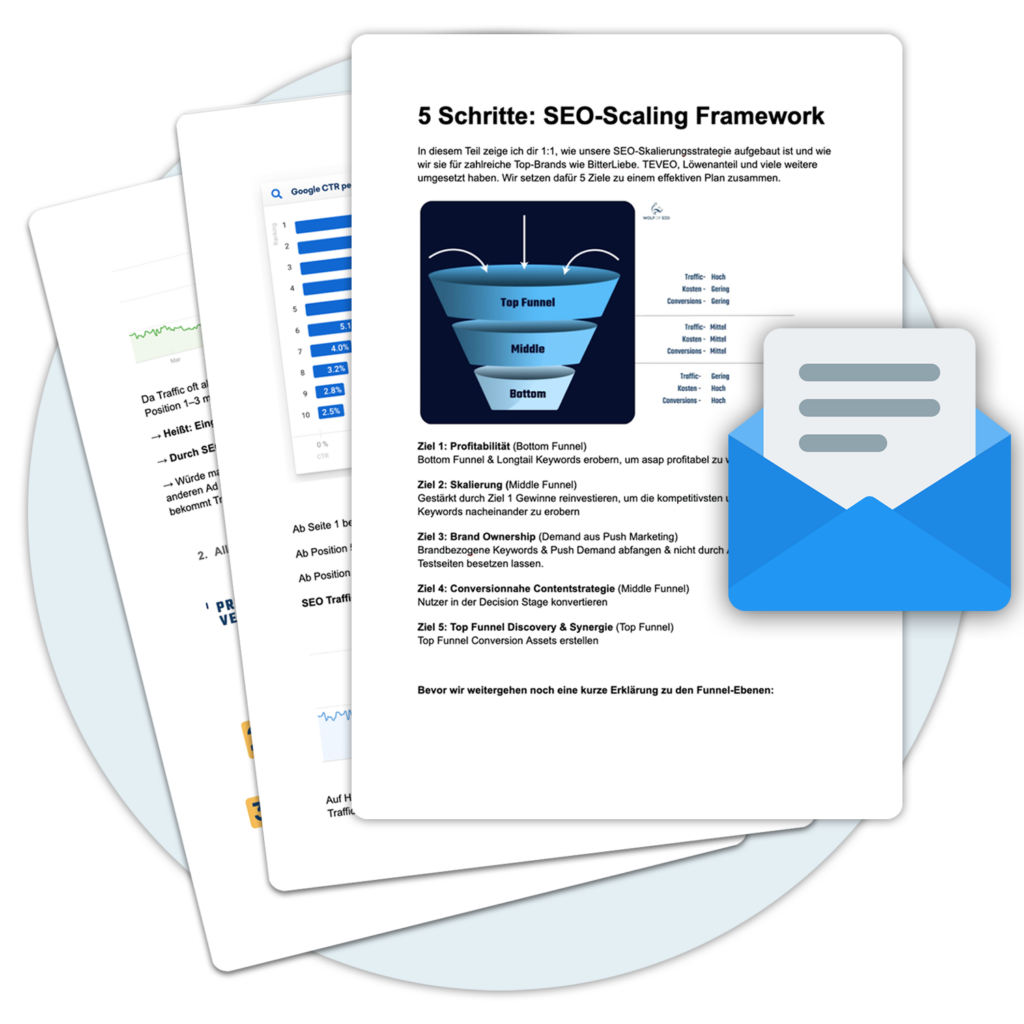Introduction to Link rel HTML
Link rel HTML is an important element in the development of websites and plays a decisive role in the area of search engine marketing in particular. With Link rel HTML it is possible to create various relationships between different documents and resources. The rel-attribute is used to define the type of relationship. This relationship can, for example, be a reference to a stylesheet file, a document with the same topic or a relationship to a predecessor document.
Through the use of Link rel HTML website operators can provide important information for search engines and thus increase visibility and the Ranking of your website. Through the clever use of Link rel HTML search engines such as Google and Bing can better understand and interpret the content of the website.
Why is Link rel HTML important?
Link rel HTML ist ein wichtiger Teil des HTML-Standards und spielt eine entscheidende Rolle für die Suchmaschinenoptimierung (SEO) von Websites. Es ermöglicht Website-Betreibern, wichtige Informationen über die Beziehung zwischen verlinkten Seiten zu vermitteln und sowohl Suchmaschinen als auch Benutzern das Verständnis der Website-Struktur zu erleichtern.
Some reasons why Link rel HTML is important:
- Understanding of the hierarchical structure: Through the use of Link rel HTML search engines can recognize the hierarchical structure of a website more easily. This enables them to Relevance of pages and improve the user experience.
- Optimization of internal linking: Link rel HTML enables website operators to internal linking by telling search engines which pages are particularly important and how they are linked to each other. This can create more search engine friendly ways to navigate through the website.
- Improving the user experience: Through a clear and well-structured use of Link rel HTML makes it easier for users to recognize where a link leads and what kind of content they can expect. This increases user confidence and improves the user experience.
- Förderung des Crawlings und Indexierens: Link rel HTML helps search engines to Crawling and indexing websites by providing them with important information about the relationship between linked pages. This enables the search engines to better understand the website and provide more relevant Search results to deliver.
Functionality of Link rel HTML
The Link rel HTML is an HTML attribute used to define the relationship between different documents. It makes it possible to create connections or relationships between pages by specifying the type and purpose of the link.
By using the Link rel attributes can search engines, Browser and other web applications can better understand the connection between the pages and perform corresponding actions. For example, the attribute enables search engines to better index the linked pages, which has a positive effect on the Ranking can have an effect.
The operation of Link rel HTML is based on adding the attribute to an HTML element, usually the <a>-tag. The attribute has different types that indicate the purpose of the link, e.g. stylesheet for references to CSS files, canonical für die Angabe der bevorzugten URL and nofollow for the indexing of search engines.
Link rel HTML can also be used to create further Metadata or provide information about the link by adding additional attributes such as hreflang or title be used.
With Link rel HTML website operators can improve the user experience by providing navigation elements that are easy to understand and use. It also allows for a clearer structuring of the website and better organization of content. By using the attribute wisely, the interaction between pages can be optimized to ensure a better browsing experience for both users and search engines.
Structure and use of Link rel HTML
The Link rel HTML-attribute is used to define the relationship between the current document and the linked document. It allows developers to specify the relationship between different pages within a website or between websites.
With the Link rel HTML-attribute can be used to define different types of links between documents. Using this attribute enables search engines to better understand the structure and context of the linked pages.
The structure of the Link rel HTML-attribute is relatively simple. It is defined in the HTML tag <a> and has the following syntax:
<a href="ziel-URL" rel="typ">Link text</a>
The href-value indicates the URL der verlinkten Seite an, während der rel-value specifies the relationship type between the pages. The Link text is displayed and is the clickable text that is shown to users.
There are different types of relationship types that are associated with the Link rel HTML-attribute can be specified. These include:
- alternate: Indicates that the linked page is an alternative to the current document, for example a translation in another language or an alternative version of the content.
- canonical: Used to set the preferred URL of a page if several URLs refer to the same content.
- nofollow: Specifies that search engines should not follow the link and should not index the linked content.
- prev: Used to define a chronological relationship between consecutive pages in a series of pages.
The use of the Link rel HTMLattribute is important to create a well-structured and easy-to-understand website. It helps search engines to better understand the content of the website and the Ranking in the search results.
Link rel attribute types and their meaning
The Link rel HTML-attribute is used to define the relationship between a linked page and the current page. It provides search engines and browsers with additional information about the link and helps to improve the user experience.
There are different types of link rel attributes, each of which has a specific meaning. Here are some of the most important link rel attribute types and their meaning:
| Attribute type | Meaning |
|---|---|
| stylesheet | Refers to an external CSS stylesheet that is used on the linked page. |
| prefetch | Provides a resource that will be required in the future, e.g. a JavaScript-file. |
| canonical | Specifies the preferred version of a page in order to Duplicate Content to avoid. |
| prev | Indicates that the linked page is the previous page in a series of pages. |
| next | Indicates that the linked page is the next page in a series of pages. |
| nofollow | Prevents search engines from following the link and indexing the linked content. |
SEO aspects of Link rel HTML
The use of the Link rel HTML-tags also has an important impact on the SEORanking of a website. By adding certain link rel attribute types, search engines like Google can better understand the content and relationships between different web pages and resources. Here are some important aspects related to SEO and the Link rel HTML-day:
- Link Juice and PageRank: By adding the rel="nofollow" attribute to a link, the so-called "Link Juice" cannot be transferred to the linked page. This can result in this page being displayed less PageRank and thus also the Ranking in the search results.
- Internal linking: By using the rel="internal" attribute, internal links can be marked to refer to important pages within your own website. This optimizes the internal link structure and important pages receive more Relevance.
- External linking: The rel="external" attribute can be used to identify external links. This can have a positive effect on the SEORanking as search engines can recognize that the website provides valuable external resources.
- Canonical links: The rel="canonical" link is used to tell search engines which version of a page should be considered the preferred version. This prevents search engines from considering several similar pages as duplicate content and the Ranking influence negatively.
By using the Link rel HTML-tag correctly and use the different link rel attribute types wisely, you can improve the SEO performance of your website and help search engines better understand and rank your content.
How link rel HTML influences the ranking
Link rel HTML plays an important role in search engine optimization (SEO) and can improve the Ranking of a website. By using the link rel attribute, a website can make its relationship to other sites, such as partner sites or social media platforms, clear.
One of the most important applications of Link rel HTML is the creation of Backlinks. By adding the rel="nofollow" attribute to a link can prevent search engines from interpreting this link as a vote for the linked page. This can be helpful to control the quality of the outgoing links of a page and thus improve the Ranking positively.
Another attribute is rel="canonical"which is used to Duplicate Content avoid problems. If several pages have almost identical content, you can use the rel="canonical" attribute to specify which page is to be viewed as the original version. This will change the Ranking the website is not affected by possible Duplicate Content negatively influenced.
In addition to the influence on the Ranking the link rel attribute types can also improve the user experience. Through the targeted use of Link rel HTML For example, mobile devices can be recognized and the website can be optimized for these devices. This contributes to a positive user experience and can also have a positive impact on the Ranking impact.
Best practices for link rel HTML for SEO
In addition to the correct use of Link rel HTML For SEO, there are some best practices that will help you get the most out of your links and optimize your search engine optimization:
- Use of relevant link texts: Make sure that the Link textwho has the Link rel-attribute is relevant and meaningful. Search engines evaluate the Relevance of the link text when evaluating a website.
- Use of rel="nofollow" for unimportant links: If you have links that are not important for your SEO strategy, you can use the rel="nofollow"-attribute to instruct search engines not to follow this link. This helps you to concentrate your linkjuice on the important pages.
- Avoidance of excessive use of Link rel HTML: Although Link rel HTML is useful to establish relationships between different websites, it is important not to overdo it. Search engines could see this as spamming and devalue your website.
- Check the functionality of the links: Make sure that all linked pages work and load correctly. Broken links can cause the Ranking negatively influence your website.
- Monitoring of the links: It is important to regularly check the links on your website and ensure that they are still relevant and working correctly. Outdated or non-functioning links can affect the user experience and have a negative impact on your website. Ranking impact.
Link rel HTML and Responsive Design
In the age of mobile devices, a responsive design essential in order to meet the needs of users. The Link rel HTML plays a decisive role. With the help of these HTML attributes, we can influence the behavior of links on different devices and thus create an optimal user experience.
The Use of Link rel HTML for mobile devices makes it possible to provide users with specific mobile versions of a website or app. With the "alternate" attribute, for example, we can specify a mobile version of a page that is optimized for mobile devices. This has the advantage of providing users with better readability and improved user guidance.
In addition, the various Link rel HTML-attribute types offer various options for integrating responsiveness. With the "stylesheet" attribute, for example, we can load certain CSS files that are specially optimized for mobile devices. This allows us to adapt the layout and design of the website to the screen size and thus ensure a user-friendly display.
Furthermore, it is important to Browser-compatibility must be taken into account. Not all Browser support all Link rel HTML-attribute types. We should therefore ensure that the attributes we use are supported by the common browsers in order to guarantee a uniform display on all devices.
Overall offers Link rel HTML many ways to make a website responsive. By using the right attributes, we can ensure that our website works optimally on all devices and offers users a pleasant user experience.
Use of Link rel HTML for mobile devices
The use of Link rel HTML can be particularly helpful for mobile devices to improve the user experience and support the mobile optimization of a website. Through the targeted use of Link rel HTML various functions and customizations for mobile devices can be enabled.
One option is to use the icon Type of the Link rel attributeto display an icon or logo for the website on mobile devices. This can help to improve the findability of the website on the home screen of a smartphone and strengthen the brand image.
Another useful use of Link rel HTML for mobile devices is the linking of alternative versions of a website. By specifying the alternate Type of the Link rel attribute and the use of the media attributes, different versions of a website can be provided for different devices or screen sizes. For example, a special mobile version of a website can be displayed for smartphones or tablets, while desktop users see the standard version.
Furthermore, the stylesheet Type of Link rel attribute can be used to load specific CSS files for mobile devices and thus optimize the display of the website on different screen sizes. Through the use of media queries In these CSS files, specific adjustments can be made for mobile devices to ensure better readability and user-friendliness.
With the help of Link rel HTML various optimizations and adjustments can be made for mobile devices to improve the user experience and promote mobile usability.
Link rel HTML and browser compatibility
With the help of the Link rel HTML tags make it possible to create various relationships and links between a current HTML page and other documents. This tag plays an important role in the navigation and structuring of websites. However, when using Link rel HTML, attention must also be paid to compatibility with various browsers.
The compatibility of Link rel Depending on the Browser and version may be different. When implementing these links, it is therefore important to check the supported Browser to consider.
The table below shows an overview of the Browser-compatibility of the common Link rel Types:
| Link rel type | Browser-compatibility |
|---|---|
| icon | Chrome, Firefox, Safari |
| stylesheet | All common Browser |
| preconnect | Chrome, Firefox, Safari |
| dns-prefetch | Chrome, Firefox, Safari |
| canonical | All common Browser |
| alternate | All common Browser |
It is of great importance that the Link rel tags are implemented correctly to ensure that web pages are displayed correctly in different browsers and that the desired relationships and links work properly.
Summary and outlook
Having dealt with various aspects of Link rel HTML we would now like to give a summary and take a look at the future of this important HTML attribute.
Link rel HTML is a way of marking links in HTML documents and indicating their relationship to documents or resources. It plays an important role in search engine optimization and enables search engines to better understand the structure of a website.
The operation of Link rel HTML is to go beyond the <link>-element in the <head>-area of an HTML document. There are different types of link rel attributes, which have different meanings and can be used for different purposes.
With regard to SEO Link rel HTML important as it helps search engines to better understand the structure of a website and index relevant content. It can also help to improve the Ranking of a website in the search results.
When using Link rel HTML For mobile devices, it is important that the website is optimized for different screen sizes and devices. By using link rel attributes such as "alternate" or "canonical", it can be ensured that the correct version of the website is displayed on different devices.
It is also important to Browser-Compatibility of Link rel HTML must be taken into account. While most modern Browser support the common link rel attribute types, it may happen that older Browser may not provide support. It is therefore important to develop a suitable strategy for the Browser-compatibility.
Overall Link rel HTML an important tool for search engine optimization and can help to improve the Ranking of a website. By using the various link rel attribute types correctly and taking SEO best practices into account, optimal use of this HTML attribute can be achieved.
« Back to Glossary Index






